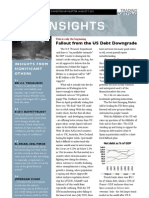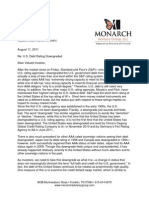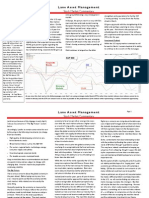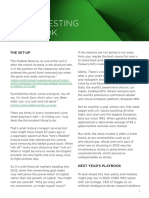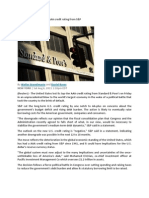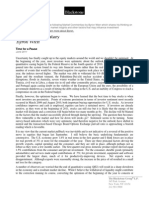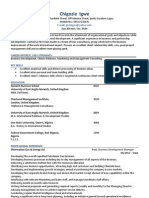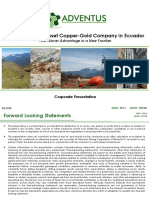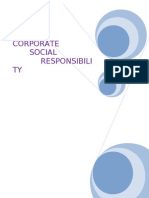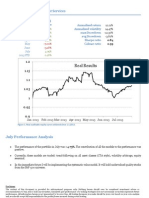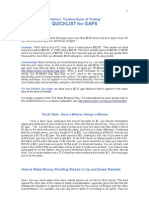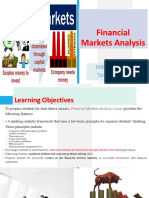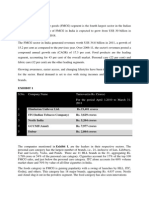19 May 2025, 09:48 UTC
Chief Investment Office GWM
Investment Research
US downgraded: End of AAA
era
UBS House View - Daily US
Solita Marcelli, GWM Chief Investment Officer Americas, UBS Financial Services Inc. (UBS FS)
Mark Haefele, Global Wealth Management Chief Investment Officer, UBS Switzerland AG
Jason Draho, Head of Asset Allocation, CIO Americas, UBS Financial Services Inc. (UBS FS)
Jon Gordon, Strategist, UBS AG Hong Kong Branch
Kiran Ganesh, Strategist, UBS AG London Branch
From the studio What to watch: 20 May 2025
Video: CIO's Sundeep Gantori on what's next for tech following the • Reserve Bank of Australia rate decision
recent AI deals (2:13)
Video: CIO's Kelvin Tay on the impact of the trade war and asset • Various Fed and ECB speakers
allocation strategies (02:01) • G7 finance ministers and central
bankers meeting in Canada
Thought of the day
What happened?
Credit ratings agency Moody’s downgraded the US sovereign credit rating
by one notch on Friday to Aa1, citing continued growth in the national
debt and rising debt servicing costs amid still-high interest rates. With this
latest action, the US government has now lost its last remaining AAA rating
from a major agency; S&P downgraded the US in 2011, and Fitch followed
in 2023.
The downgrade came shortly after the House Budget Committee failed to
advance President Trump’s “One, Big, Beautiful Bill” to extend the 2017
tax cuts, reflecting ongoing divisions within the Republican majority over
spending and deficit reduction. Late Sunday, changes to appease fiscal
concerns saw the tax bill advance through the committee along party lines,
setting up potential passage in the House later this week.
At the time of writing, S&P 500 futures were 1.2% lower, and the 10-year
US Treasury yield is up 9 basis points to around 4.53% at print.
What do we think?
The move should not come as a surprise. The federal government
is running a budget deficit in excess of USD 2 trillion per year, even
after a period of strong economic growth and low unemployment, and
net interest costs now absorb 18% of tax revenues. But while the US
debt trajectory has been worsening and is the reason for the Moody’s
downgrade, this is already well known by investors.
Significant selling of US Treasuries is unlikely, in our view. While
yields may move 10-15bps higher in the short term, as seen after the 2023
This report has been prepared by UBS Financial Services Inc. (UBS FS), UBS Switzerland AG, UBS AG Hong Kong Branch,
UBS AG London Branch. Please see important disclaimers and disclosures at the end of the document.
�Daily US
Fitch downgrade, the Moody’s move is unlikely to trigger significant selling
or changes in collateral haircuts, in our view. Most investment mandates
do not require AAA ratings for US Treasuries, and central banks continue to
value the Treasury market for its exceptionally deep liquidity.
The US has very high credit quality, in our view, and aside from cash,
US Treasuries remain the lowest-risk and lowest-yielding USD asset. The
strength of US capital markets, the dollar’s reserve currency status, and
the significant wealth held by US households mean that the US’s ability to
repay debt is not in question, in our view. Academic research also shows
that for countries with monetary sovereignty, rating changes have little
lasting impact on short-term bond yields.
Credit downgrades are less politically costly in the US than you
might think. The first US downgrade in 2011 was unexpected and
triggered significant bipartisan consternation. But it ultimately resulted in
few lasting financial or political repercussions. The 2023 Fitch downgrade
was largely shrugged off by policymakers. The 2025 Moody’s downgrade
may be used as a political tool in near-term budget negotiations,
particularly among lawmakers who believe that the current "One, Big,
Beautiful Bill" does not do enough to shrink the deficit, but we think it is
unlikely to alter the overall trajectory of US fiscal policy.
Equity investors are focused elsewhere. With Moody’s the third credit
ratings agency to downgrade the US, we believe that the shock factor
for investors has likely faded, and we would expect a more muted equity
market response to Friday’s downgrade. In recent weeks, global investors
have been more focused on effective US tariff rates, which we see settling
in the 15% region—a headwind to growth but not enough to cause a
recession, in our view. While budget negotiations and deficit implications
may begin to have an increasing impact on markets in the weeks ahead,
we do not think that the credit rating downgrade in itself will be a major
focus for equity markets.
How to invest?
Overall, we view this latest credit action as a headline risk rather than a
fundamental shift for markets. We would also expect the Federal Reserve
to step in if there were a disorderly or unsustainable increase in bond yields.
So while the downgrade may lean against some recent "good news"
momentum, we do not expect it to have a major direct impact on financial
markets.
Against this backdrop, we make several investment recommendations:
Seek durable income. While there is a risk that bond yields could rise
further in the days and weeks ahead in response to the downgrade, and in
anticipation of higher US fiscal deficits, we believe current (or higher) yield
levels offer an opportunity for investors to lock in durable portfolio income.
Our preference remains for medium-tenor USD bonds of around five years,
but depending on the market reaction in longer-term yields, additional
investment opportunities may emerge in the days ahead. We expect
Treasury yields to fall into year-end and believe high-quality government
and investment grade bonds remain attractive for diversification and
income.
2
�Daily US
Phase into equities. We recently cut our Attractive rating on US equities
to Neutral, following the strong recent rally. However, our current Neutral
rating on US equities should not be mistaken for a bearish view, and we
continue to recommend a full strategic allocation. The recent earnings
season has demonstrated the strength in structural AI earnings trends,
we expect US stocks to move higher over the next 12 months, and we
maintain our sector-level Attractive ratings on communications services,
information technology, health care, and utilities. We also maintain strong
conviction in the long-term potential of our Transformational Innovation
Opportunity themes of Artificial intelligence, Power and resources, and
Longevity.
Sell dollar rallies. The dollar has consolidated in recent weeks, following
a spell of significant weakness in the immediate aftermath of "Liberation
Day." We believe that this provides an opportunity for investors with
excess USD cash, or international investors with unhedged exposure to US
assets, to reduce their exposure to the US dollar. Over the longer term, we
believe the trend of international diversification could lead to further dollar
weakness, and particularly if the Federal Reserve begins to play a more
active role intervening in bond markets amid high fiscal deficits.
Navigate political risks. Gold has reaffirmed its value as a hedge over
the past year, and we continue to see its value as a longer-term portfolio
hedge against downside scenarios. Over the long term, a weaker US dollar,
persistent geopolitical pressures, and declining real interest rates should all
support prices. We think a mid-single-digit percentage allocation to gold
within a broadly diversified portfolio is appropriate for investors looking to
manage political risks. We also see hedge funds as valuable diversifiers—
whether through global-macro trading, market-neutral equity strategies,
or agile multi-strategy platforms—capable of cushioning drawdowns when
traditional exposures misalign. Amid geopolitical uncertainty, mounting
fiscal pressures and shifting monetary regimes, they can dynamically adjust
positions, judiciously deploy leverage, and hedge key risks. While careful
attention to manager selection, liquidity terms, and incentive alignment is
essential, a modest allocation to select hedge funds can enhance portfolio
resilience and smooth overall return outcomes.
Caught our attention
EU-US trade talks inch forward. Following the US-China de-escalation
earlier this month, markets have been watching for positive signals on
US-Europe progress. EU Commission President Ursula von der Leyen and
Italian PM Giorgia Meloni meet with US Vice President JD Vance for talks
this weekend. Prior to the meeting, Von der Leyen expressed confidence in
reaching a trade deal, but cautioned that “the devil is in the details.” Vance
described the meeting as “the beginning of long-term trade negotiations,”
according to Reuters. President Trump’s 90-day postponement of new
“reciprocal” tariffs has eased some concerns over trade, but US levies
remain much higher than a month ago.
Our view: Trade tensions have dominated markets in recent weeks, so
any progress should help further improve sentiment. We remain less
concerned about direct tariff impacts on European companies and are
more focused on the risk of a broader global economic slowdown. Our
3
�Daily US
base case expectation is for the US effective tariff rate to settle near 15%.
Our scenarios suggest the risk-reward is balanced for European equities
at current levels, and we continue to recommend selective exposure to
European equities through our “Six ways to invest in Europe” theme. We
see better risk/reward in Eurozone small- and mid-caps, given their higher
domestic focus, low valuations, and the potential for rate cuts to cushion
slower growth. At the sector level, we prefer defensives with limited tariff
risk, such as utilities and real estate, as well as IT and industrials for their
long-term opportunities.
US consumer sentiment dips to second lowest reading. Consumer
sentiment deteriorated in early May, with the University of Michigan's
sentiment index falling to 50.8—its second-lowest reading on record.
Nearly 75% of respondents cited concerns over tariffs, highlighting
how trade policy remains a concern for US households. Inflation
expectations surged, with year-ahead views jumping to 7.3% and long-
term expectations rising to 4.6%, both reflecting the highest levels since
1981. Additionally, views on current personal finances dropped to the
weakest level since 2009, and the expectations index slid to 46.5, an
almost 45-year low. Despite this, buying conditions for large household
goods improved slightly, suggesting that consumers may be concerned but
are not yet pulling back spending in a broad way.
Our view: While consumer sentiment has steadily deteriorated in recent
months, the sharp decline hasn't yet translated into a slowdown in hard
economic data. Retail sales are still positive, the labor market remains
resilient, and inflation has surprised to the downside. Additionally, the
Atlanta Fed's GDPNow estimate for second quarter growth currently
stands at 2.5%, revised up from 2.3% earlier this month. However, the
inflationary effects of tariffs may become more apparent in the coming
months, particularly as inventories stockpiled ahead of policy changes
begin to unwind, posing a risk to both inflation and growth. Against this
backdrop, we expect GDP growth to slow to around 1.5% in 2025, down
from 2.8% in 2024, and our base case calls for 100 basis points of Fed rate
cuts starting in September. We continue to recommend seeking durable
income in quality bonds.
4
�Daily US
5
�Non-Traditional Assets
Non-traditional asset classes are alternative investments that include hedge funds, private equity, real estate, and managed
futures (collectively, alternative investments). Interests of alternative investment funds are sold only to qualified investors, and
only by means of offering documents that include information about the risks, performance and expenses of alternative investment
funds, and which clients are urged to read carefully before subscribing and retain. An investment in an alternative investment fund
is speculative and involves significant risks. Specifically, these investments (1) are not mutual funds and are not subject to the same
regulatory requirements as mutual funds; (2) may have performance that is volatile, and investors may lose all or a substantial amount
of their investment; (3) may engage in leverage and other speculative investment practices that may increase the risk of investment
loss; (4) are long-term, illiquid investments, there is generally no secondary market for the interests of a fund, and none is expected
to develop; (5) interests of alternative investment funds typically will be illiquid and subject to restrictions on transfer; (6) may not be
required to provide periodic pricing or valuation information to investors; (7) generally involve complex tax strategies and there may
be delays in distributing tax information to investors; (8) are subject to high fees, including management fees and other fees and
expenses, all of which will reduce profits.
Interests in alternative investment funds are not deposits or obligations of, or guaranteed or endorsed by, any bank or other insured
depository institution, and are not federally insured by the Federal Deposit Insurance Corporation, the Federal Reserve Board, or any
other governmental agency. Prospective investors should understand these risks and have the financial ability and willingness to accept
them for an extended period of time before making an investment in an alternative investment fund and should consider an alternative
investment fund as a supplement to an overall investment program.
In addition to the risks that apply to alternative investments generally, the following are additional risks related to an investment in
these strategies:
Hedge Fund Risk: There are risks specifically associated with investing in hedge funds, which may include risks associated with
investing in short sales, options, small-cap stocks, “junk bonds,” derivatives, distressed securities, non-U.S. securities and illiquid
investments.
Managed Futures: There are risks specifically associated with investing in managed futures programs. For example, not all managers
focus on all strategies at all times, and managed futures strategies may have material directional elements.
Real Estate: There are risks specifically associated with investing in real estate products and real estate investment trusts. They
involve risks associated with debt, adverse changes in general economic or local market conditions, changes in governmental, tax,
real estate and zoning laws or regulations, risks associated with capital calls and, for some real estate products, the risks associated
with the ability to qualify for favorable treatment under the federal tax laws.
Private Equity: There are risks specifically associated with investing in private equity. Capital calls can be made on short notice,
and the failure to meet capital calls can result in significant adverse consequences including, but not limited to, a total loss of
investment.
Foreign Exchange/Currency Risk: Investors in securities of issuers located outside of the United States should be aware that even
for securities denominated in U.S. dollars, changes in the exchange rate between the U.S. dollar and the issuer’s “home” currency
can have unexpected effects on the market value and liquidity of those securities. Those securities may also be affected by other
risks (such as political, economic or regulatory changes) that may not be readily known to a U.S. investor.
�Daily US
Appendix
Risk information
UBS Chief Investment Office's ("CIO") investment views are prepared and published by the Global Wealth Management
business of UBS Switzerland AG (regulated by FINMA in Switzerland) or its affiliates ("UBS"), part of UBS Group AG ("UBS
Group"). UBS Group includes former Credit Suisse AG, its subsidiaries, branches and affiliates. Additional disclaimer relevant
to Credit Suisse Wealth Management follows at the end of this section.
The investment views have been prepared in accordance with legal requirements designed to promote the independence
of investment research.
Generic investment research – Risk information:
This publication is for your information only and is not intended as an offer, or a solicitation of an offer, to buy or sell
any investment or other specific product. The analysis contained herein does not constitute a personal recommendation or
take into account the particular investment objectives, investment strategies, financial situation and needs of any specific
recipient. It is based on numerous assumptions. Different assumptions could result in materially different results. Certain
services and products are subject to legal restrictions and cannot be offered worldwide on an unrestricted basis and/or may
not be eligible for sale to all investors. All information and opinions expressed in this document were obtained from sources
believed to be reliable and in good faith, but no representation or warranty, express or implied, is made as to its accuracy
or completeness (other than disclosures relating to UBS). All information and opinions as well as any forecasts, estimates
and market prices indicated are current as of the date of this report, and are subject to change without notice. Opinions
expressed herein may differ or be contrary to those expressed by other business areas or divisions of UBS as a result of
using different assumptions and/or criteria. UBS may utilise artificial intelligence tools (“AI Tools”) in the preparation of this
document. Notwithstanding any such use of AI Tools, this document has undergone human review.
In no circumstances may this document or any of the information (including any forecast, value, index or other calculated
amount ("Values")) be used for any of the following purposes (i) valuation or accounting purposes; (ii) to determine the
amounts due or payable, the price or the value of any financial instrument or financial contract; or (iii) to measure the
performance of any financial instrument including, without limitation, for the purpose of tracking the return or performance
of any Value or of defining the asset allocation of portfolio or of computing performance fees. By receiving this document
and the information you will be deemed to represent and warrant to UBS that you will not use this document or otherwise
rely on any of the information for any of the above purposes. UBS and any of its directors or employees may be entitled at
any time to hold long or short positions in investment instruments referred to herein, carry out transactions involving relevant
investment instruments in the capacity of principal or agent, or provide any other services or have officers, who serve as
directors, either to/for the issuer, the investment instrument itself or to/for any company commercially or financially affiliated
to such issuers. At any time, investment decisions (including whether to buy, sell or hold securities) made by UBS and its
employees may differ from or be contrary to the opinions expressed in UBS research publications. Some investments may not
be readily realizable since the market in the securities is illiquid and therefore valuing the investment and identifying the risk
to which you are exposed may be difficult to quantify. UBS relies on information barriers to control the flow of information
contained in one or more areas within UBS, into other areas, units, divisions or affiliates of UBS. Futures and options trading
is not suitable for every investor as there is a substantial risk of loss, and losses in excess of an initial investment may occur.
Past performance of an investment is no guarantee for its future performance. Additional information will be made available
upon request. Some investments may be subject to sudden and large falls in value and on realization you may receive back
less than you invested or may be required to pay more. Changes in foreign exchange rates may have an adverse effect on
the price, value or income of an investment. The analyst(s) responsible for the preparation of this report may interact with
trading desk personnel, sales personnel and other constituencies for the purpose of gathering, synthesizing and interpreting
market information.
Different areas, groups, and personnel within UBS Group may produce and distribute separate research products
independently of each other. For example, research publications from CIO are produced by UBS Global Wealth
Management. UBS Global Research is produced by UBS Investment Bank. Research methodologies and rating systems
of each separate research organization may differ, for example, in terms of investment recommendations, investment
horizon, model assumptions, and valuation methods. As a consequence, except for certain economic forecasts (for which
UBS CIO and UBS Global Research may collaborate), investment recommendations, ratings, price targets, and valuations
provided by each of the separate research organizations may be different, or inconsistent. You should refer to each relevant
research product for the details as to their methodologies and rating system. Not all clients may have access to all products
from every organization. Each research product is subject to the policies and procedures of the organization that produces it.
The compensation of the analyst(s) who prepared this report is determined exclusively by research management and senior
management (not including investment banking). Analyst compensation is not based on investment banking, sales and
trading or principal trading revenues, however, compensation may relate to the revenues of UBS Group as a whole, of which
investment banking, sales and trading and principal trading are a part.
Tax treatment depends on the individual circumstances and may be subject to change in the future. UBS does not provide
legal or tax advice and makes no representations as to the tax treatment of assets or the investment returns thereon both in
7
�Daily US
general or with reference to specific client's circumstances and needs. We are of necessity unable to take into account the
particular investment objectives, financial situation and needs of our individual clients and we would recommend that you
take financial and/or tax advice as to the implications (including tax) of investing in any of the products mentioned herein.
This material may not be reproduced or copies circulated without prior authority of UBS. Unless otherwise agreed in writing
UBS expressly prohibits the distribution and transfer of this material to third parties for any reason. UBS accepts no liability
whatsoever for any claims or lawsuits from any third parties arising from the use or distribution of this material. This report
is for distribution only under such circumstances as may be permitted by applicable law. For information on the ways in
which CIO manages conflicts and maintains independence of its investment views and publication offering, and research
and rating methodologies, please visit www.ubs.com/research-methodology. Additional information on the relevant authors
of this publication and other CIO publication(s) referenced in this report; and copies of any past reports on this topic; are
available upon request from your client advisor.
Important Information About Sustainable Investing Strategies: Sustainable investing strategies aim to consider
and incorporate environmental, social and governance (ESG) factors into investment process and portfolio construction.
Strategies across geographies approach ESG analysis and incorporate the findings in a variety of ways. Incorporating ESG
factors or Sustainable Investing considerations may inhibit UBS’s ability to participate in or to advise on certain investment
opportunities that otherwise would be consistent with the Client’s investment objectives. The returns on a portfolio
incorporating ESG factors or Sustainable Investing considerations may be lower or higher than portfolios where ESG factors,
exclusions, or other sustainability issues are not considered by UBS, and the investment opportunities available to such
portfolios may differ.
External Asset Managers / External Financial Consultants: In case this research or publication is provided to an External
Asset Manager or an External Financial Consultant, UBS expressly prohibits that it is redistributed by the External Asset
Manager or the External Financial Consultant and is made available to their clients and/or third parties.
USA: Distributed to US persons only by UBS Financial Services Inc. or UBS Securities LLC, subsidiaries of UBS AG. UBS
Switzerland AG, UBS Europe SE, UBS Bank, S.A., UBS Brasil Administradora de Valores Mobiliarios Ltda, UBS Asesores Mexico,
S.A. de C.V., UBS SuMi TRUST Wealth Management Co., Ltd., UBS Wealth Management Israel Ltd and UBS Menkul Degerler
AS are affiliates of UBS AG. UBS Financial Services Inc. accepts responsibility for the content of a report prepared
by a non-US affiliate when it distributes reports to US persons. All transactions by a US person in the securities
mentioned in this report should be effected through a US-registered broker dealer affiliated with UBS, and not
through a non-US affiliate. The contents of this report have not been and will not be approved by any securities
or investment authority in the United States or elsewhere. UBS Financial Services Inc. is not acting as a municipal
advisor to any municipal entity or obligated person within the meaning of Section 15B of the Securities Exchange
Act (the "Municipal Advisor Rule") and the opinions or views contained herein are not intended to be, and do
not constitute, advice within the meaning of the Municipal Advisor Rule.
For country information, please visit ubs.com/cio-country-disclaimer-gr or ask your client advisor for the full disclaimer.
Additional Disclaimer relevant to Credit Suisse Wealth Management
You receive this document in your capacity as a client of Credit Suisse Wealth Management. Your personal data will be
processed in accordance with the Credit Suisse privacy statement accessible at your domicile through the official Credit
Suisse website . In order to provide you with marketing materials concerning our products and services, UBS Group AG
and its subsidiaries may process your basic personal data (i.e. contact details such as name, e-mail address) until you notify
us that you no longer wish to receive them. You can optout from receiving these materials at any time by informing your
Relationship Manager.
Except as otherwise specified herein and/or depending on the local Credit Suisse entity from which you are receiving this
report, this report is distributed by UBS Switzerland AG, authorised and regulated by the Swiss Financial Market Supervisory
Authority (FINMA).
Version A/2025. CIO82652744
© UBS 2025. The key symbol and UBS are among the registered and unregistered trademarks of UBS. All rights reserved.







